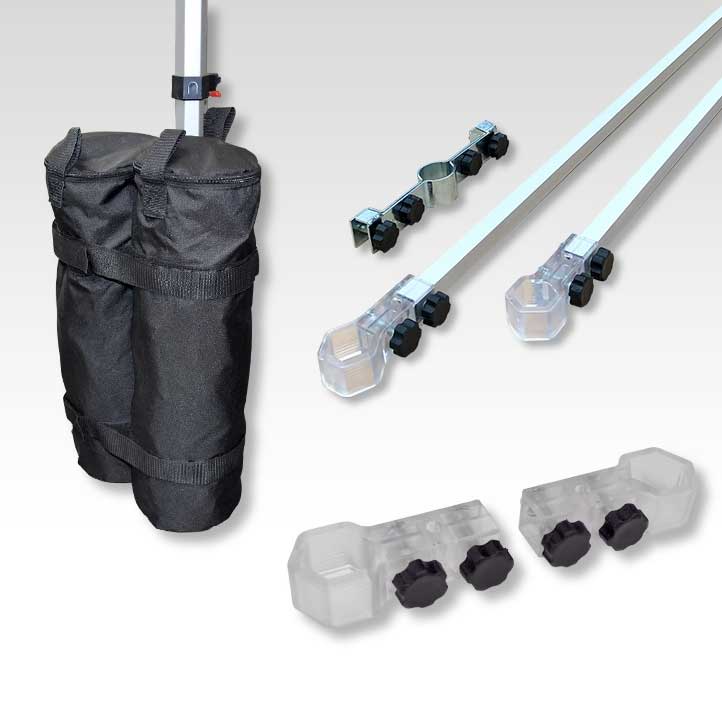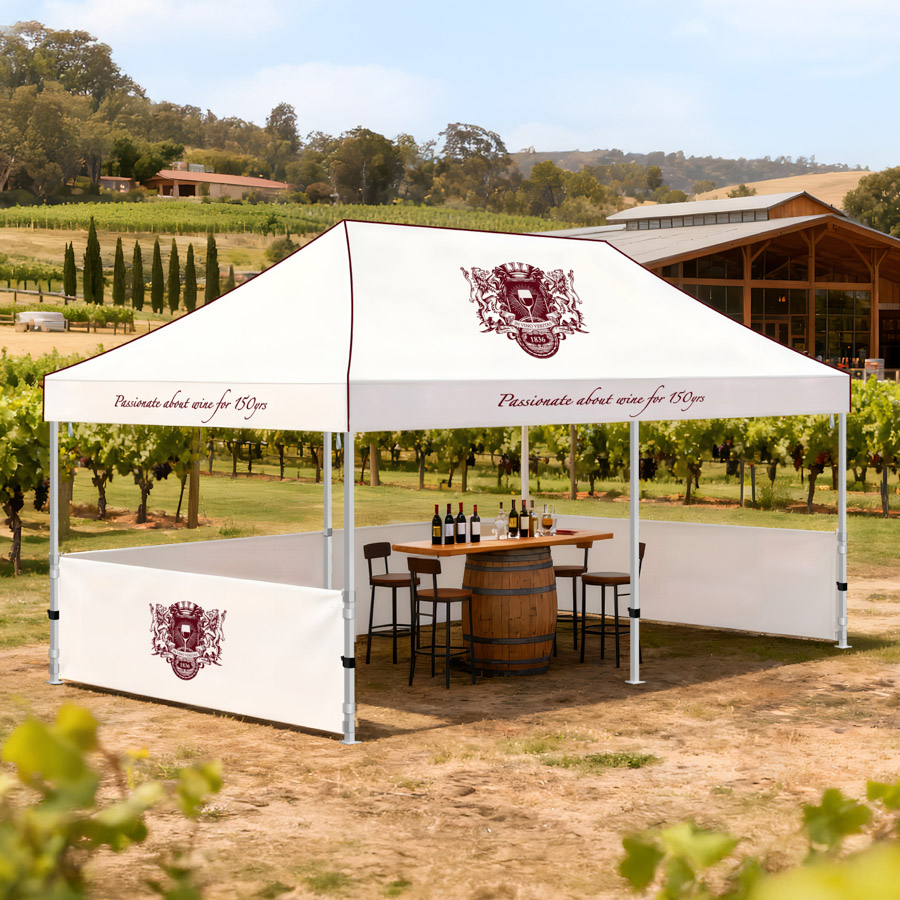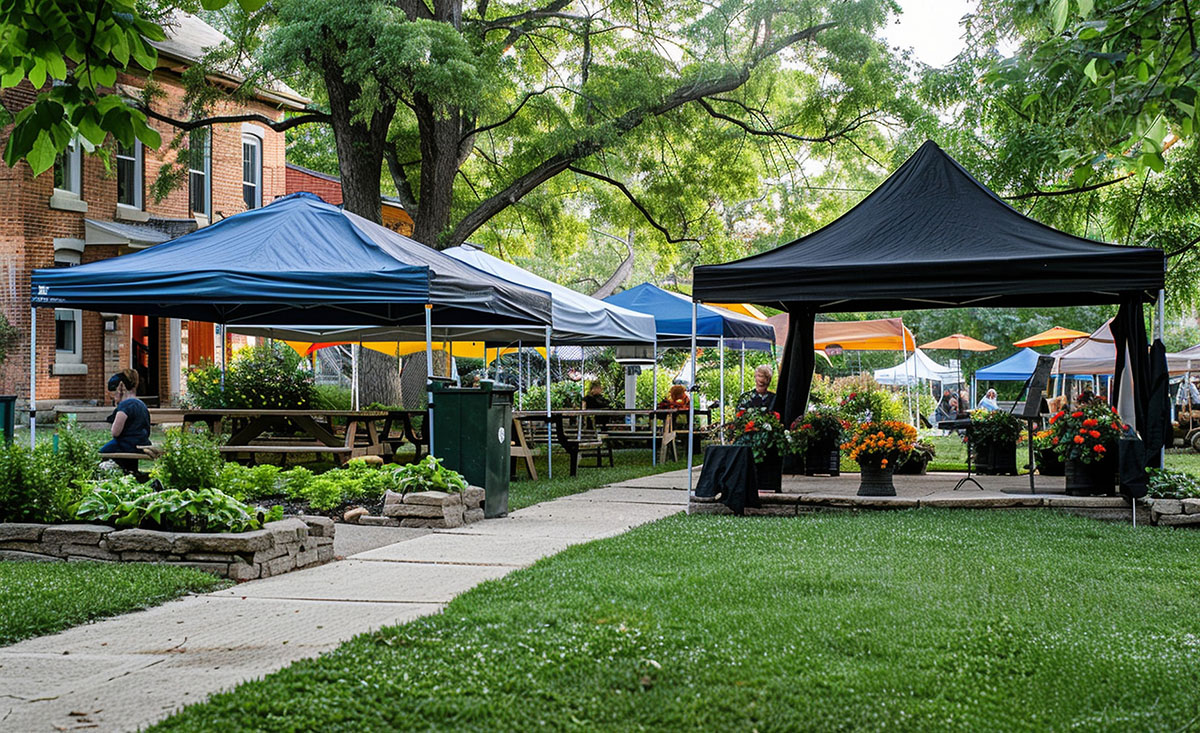
Pop-up canopies are the unsung heroes of outdoor events, offering shade, shelter, and a professional touch to any setup.
For anyone who is planning to invest in a pop-up tent, it’s important to know some key elements about these fun and functional crowd-pleasers in order to make the best decision on which one is right for you.
- A canopy tent is a portable shelter, often used for a myriad of outdoor events.
- Canopy tents are great for providing protection, shade, and a place to gather, but you’ll want to know more about their specifications before you invest in one.
- Make sure to order your pop-up canopy from a company that values quality, durability, and customer service.
- ― What is a Pop-Up Canopy Tent?
- ― Weight Requirements: Staying Grounded in All Conditions
- ― A Durable Investment: Tips for Keeping Your Pop-Up Tent in Tip-Top Shape
- ― The Perfect Pop-Up Canopy Tents Begin at Easy Signs
Whether you’re a seasoned vendor, an event organizer, or someone looking for the perfect canopy tent for this summer’s backyard parties, understanding the ins and outs of pop-up canopies is essential.
From pop-up tent weights and how to secure them, to design specifications and material choices, the following will help you figure out the factors that will make your canopy not just functional, but also exceptional.
What is a Pop-Up Canopy Tent?
A pop-up canopy tent is a portable shelter that is designed to provide shade, protection from weather elements, and a defined space for all sorts of outdoor events.
Well-designed canopy tents typically consist of a lightweight frame—usually made of steel or aluminum—and a fabric canopy top, which is usually water-resistant, UV-protective, and durable.
One of the top features of a canopy tent is its ease of setup. Most canopies come with adjustable legs to modify their height, and can also be purchased with optional backwalls and/or sidewalls to give them more privacy and protection.
Making sure your canopy tent is properly secured is easy as long as you have the right tent anchors.
Things like weight bags and tent stakes can be bought as additional accessories, or you can DIY canopy weights with items such as concrete blocks or gallon water jugs.
Pop-up canopies are widely used for outdoor events like farmers’ markets, trade shows, backyard parties, beach outings, sporting events, and even camping trips. They are favored for their convenience, versatility, and ability to be easily stored and transported when not in use.
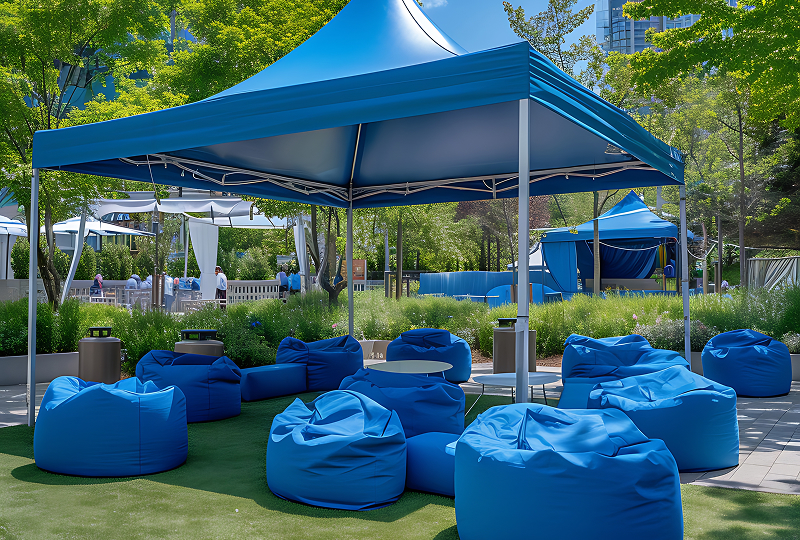
Weight Requirements: Staying Grounded in All Conditions
One of the most critical aspects of pop-up canopies is keeping them secure. Without proper weighting, even a strong breeze can send your canopy flying—posing safety risks and potential damage.
Why Weights Are Essential
Weights ensure that your canopy stays grounded, providing stability in various weather conditions.
They are especially important for outdoor events where the wind is unpredictable. Proper weights not only protect your canopy but also prevent accidents.
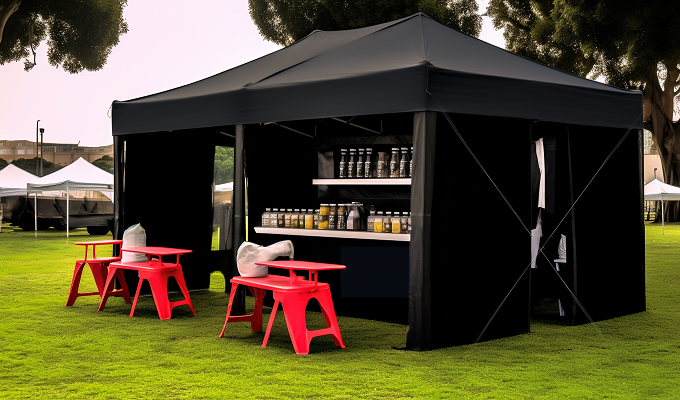
How Much Weight Do You Need?
The amount of weight needed for your pop-up tent depends on the size of your canopy and the environmental conditions.
For a standard 10×10 pop-up canopy, the general recommendation is to use at least 40 pounds of weight per leg.
For larger canopies, you may need 50-60 pounds per leg. If you’re dealing with particularly windy conditions, consider doubling these weights for added security.
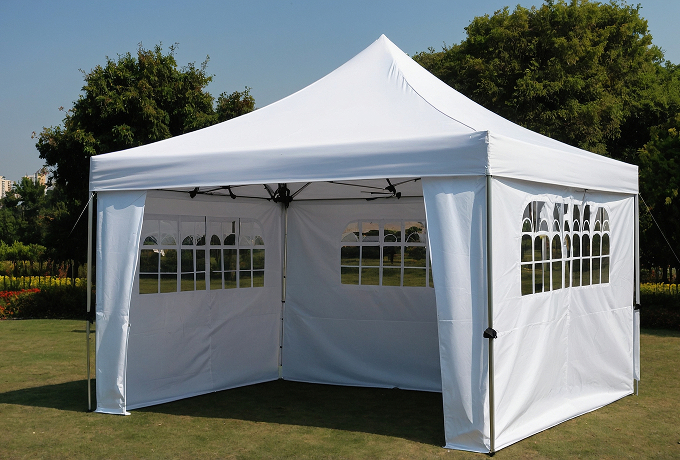
Types of Canopy Tent Weights
In order to properly anchor each tent leg, think about some of the following tent weight options:
- Sandbags: Durable and easy to fill, sandbags are a popular choice. They are versatile and can be attached to canopy legs.
- Water Weights: These are lightweight when empty, making them easy to transport. Once filled with water, they provide sufficient grounding for your canopy.
- Weight Plates: These compact, stackable plates are ideal for those who want a clean and professional look.
- DIY Weights: Buckets filled with concrete or heavy-duty cinder blocks can serve as budget-friendly alternatives.
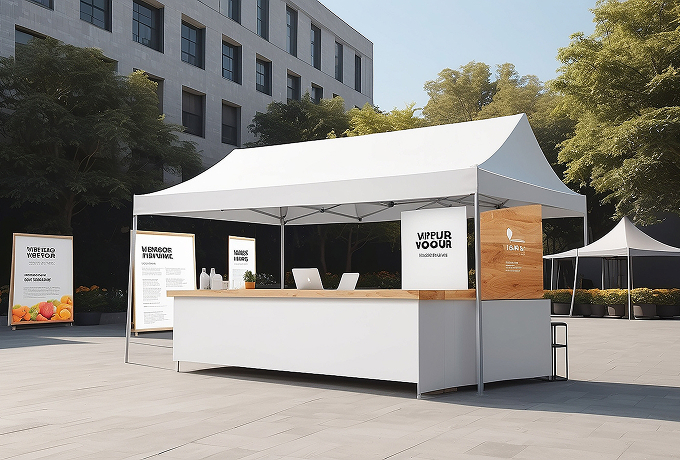
Best Materials: Durability Meets Functionality
The materials used in the construction of your pop-up canopy play a significant role in its performance and longevity. Both the frame and the fabric need to be carefully considered based on your intended usage.
Think about the following:
Frame Materials
Pop-up tents typically come with either a steel or aluminum frame.
- Steel: Steel frames are incredibly sturdy and ideal for those who need a canopy for frequent use or exposure to strong winds. However, they tend to be heavier and may require more effort during setup.
- Aluminum: Aluminum frames are lightweight and corrosion-resistant, making them perfect for vendors or individuals looking for portability and durability. They may not be as strong as steel but are easier to transport.
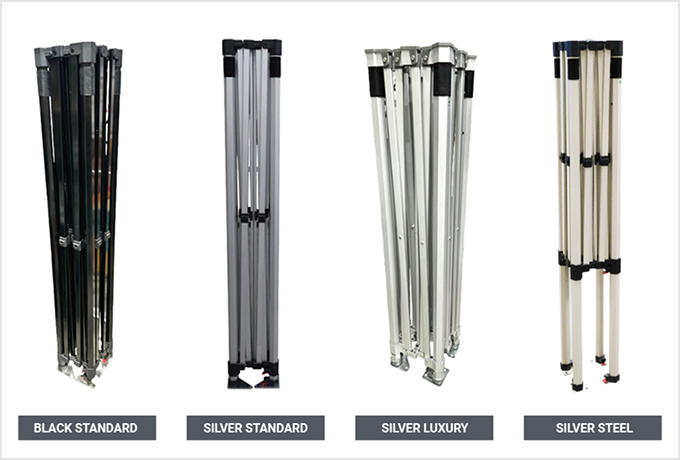
Canopy Fabric
Vinyl-coated polyester offers enhanced waterproofing and UV protection, making it ideal for outdoor markets or prolonged exposure to sunlight.
A Durable Investment: Tips for Keeping Your Pop-Up Tent in Tip-Top Shape
A well-maintained canopy lasts longer and performs better.
Here are some tips to ensure your investment stays in great condition:
- Clean Regularly: Wipe down the fabric with a gentle soap solution to remove dirt, pollen, and stains. Avoid abrasive chemicals that can degrade the material.
- Dry Thoroughly: Always let your canopy dry completely before storing it to prevent mold and mildew growth.
- Inspect for Damage: Check the frame and fabric for signs of wear and tear after every use. Address small issues like loose screws or minor tears before they worsen.
- Store Properly: Use the provided carry bag and keep your canopy in a dry, cool place to prevent damage during storage.
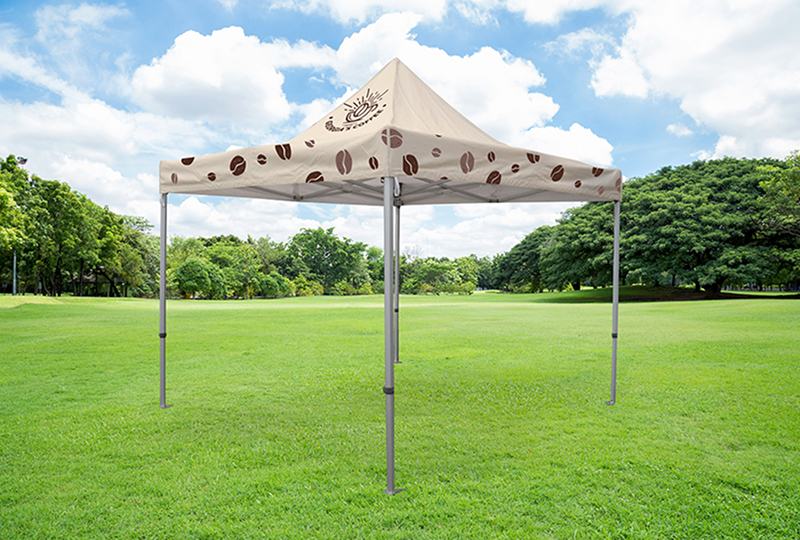
The Perfect Pop-Up Canopy Tents Begin at Easy Signs
Understanding the specs of a pop-up canopy is the first step toward making an informed purchase. Whether you’re planning a small backyard gathering or a large-scale market event, the right canopy can elevate your experience by providing shade, shelter, and style.
It’s also important to know the specifications of the company that will create your canopy.
At Easy Signs, we are an industry leader when it comes to pop-up canopy creation and design.
Our state-of-the-art facility, located in Allentown, PA, specializes in the production of a wide variety of digitally printed canopies and signage. We have invested in the best cutting-edge technology, which allows us to deliver high-quality signage to customers across the United States.
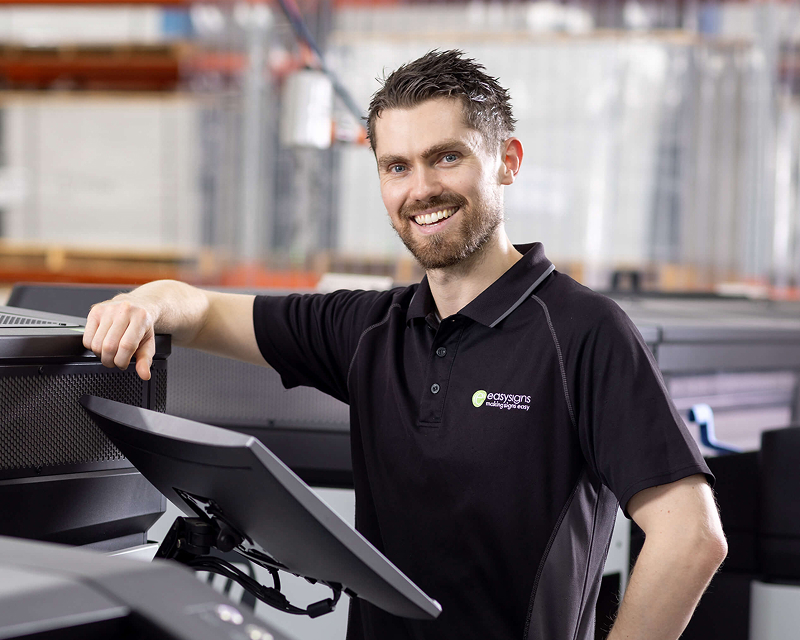
When you are ready to invest in a pop-up canopy tent, invest in Easy Signs. Reach out to our Customer Happiness Team today to learn more about how we can partner together. If you’re looking for added durability and sun protection, consider choosing a UV-protected pop-up canopy to keep your guests and products shielded from harmful rays while enhancing your outdoor setup.





 $14
delivery on most products**
$14
delivery on most products**
 24hr production*
24hr production*
